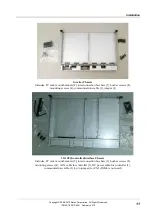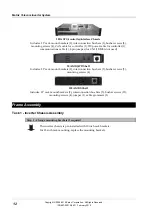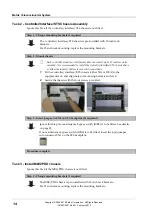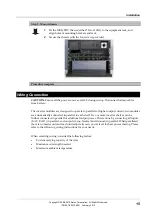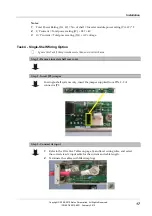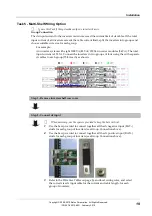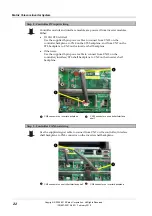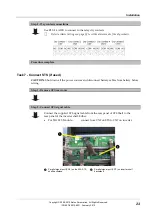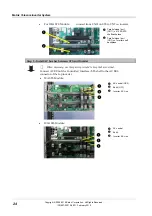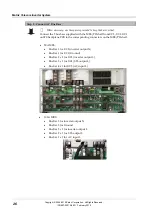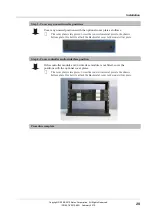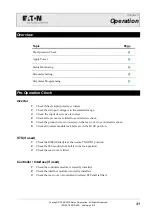
Matrix Telecom Inverter System
18
Copyright © 2008-2010 Eaton Corporation. All Rights Reserved.
IPN 997-00012-68D February 2010
3
Route the cables to the negative (BAT-) and positive (BAT+) dc input
terminal studs through the left-side panel.
4
Secure the connections with the screws and washers supplied. Tighten the
screws according to the Standard Torque Settings on page
.
Do
not
connect the other end of cables to the battery or -48V DC source at this
stage.
WARNING:
DC source voltage must be between 45V and 58 V.
CAUTION:
Reverse polarity connections will damage the unit and are not
covered by the warranty. Ensure correct polarity (positive to positive, negative
to negative) before completing connections to the battery or dc source, and the
inverter unit.
Step 4 - Connect ac output cables (if required)
Ignore this Step if a static transfer switch (STS) or a maintenance bypass switch
(MBS) is fitted.
1
Refer to the Wire Size Tables on page
and local wiring rules, and select
the correct size ac cable.
2
Terminate the cables with M4 crimp lugs.
3
Route the cables to the ac neutral, ground and line terminal studs through
the left-side panel.
4
Secure the connections with the screws and washers supplied. Tighten the
screws according to the Standard Torque Settings on page
.
"
Neutral
#
Earth
$
Line (phase).
Step 5 - Connect inverter alarm (if required)
CN11 on the inverter shelf backplane is the inverter alarm. It will send out
alarm signal if either inverter in the shelf fails.
This alarm is typically used if the inverters are stand-alone (no controller).
If required, connect from CN11 to a suitable digital input of an external alarm
monitoring system. See details on page
Procedure complete








